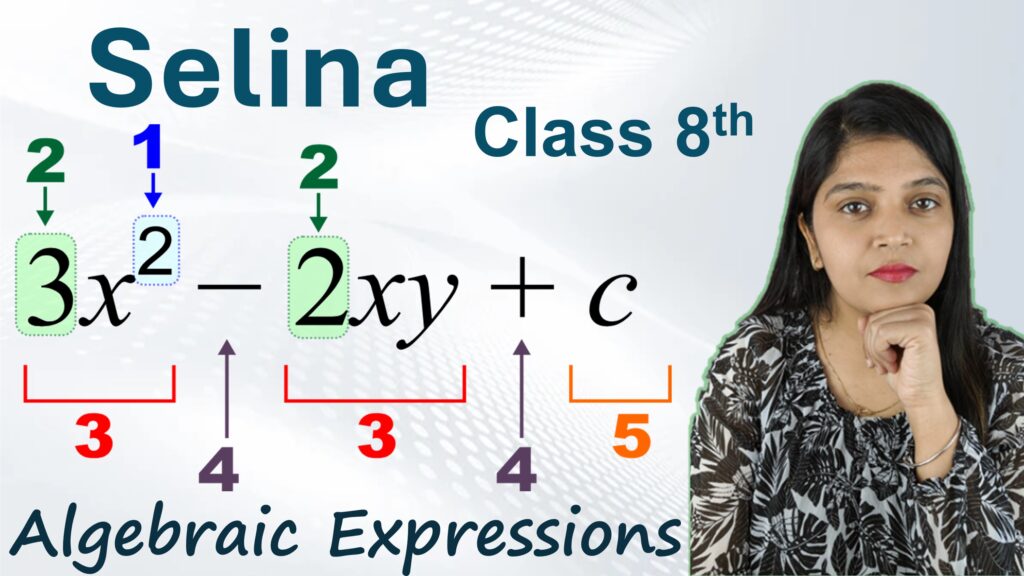Exercise: 4-A
Q1: What are rational numbers? Give four examples of each of positive rationals and negative rationals. Give an example of a rational number which is neither positive nor negative.
Rational numbers are numbers that can be expressed as \(\frac{p}{q}\), where p and q are integers and q ≠ 0.
Positive rational numbers: \(\frac{3}{4},\ \frac{7}{2},\ 5,\ \frac{11}{9}\)
Negative rational numbers: \(-\frac{2}{3},\ -6,\ -\frac{9}{5},\ -\frac{13}{4}\)
Rational number neither positive nor negative: \(0\)
Q2: Which of the following are rational numbers?
i. \(\frac{5}{15}\)
Step 1: \(\frac{5}{15}\) is in the form \(\frac{p}{q}\), where p = 5 and q = 15 (≠ 0).
Answer: Yes, it is a rational number.
ii. \(\frac{-6}{23}\)
Step 2: p = -6, q = 23 (≠ 0).
Answer: Yes, it is a rational number.
iii. \(17\)
Step 3: 17 can be written as \(\frac{17}{1}\).
Answer: Yes, it is a rational number.
iv. \(-25\)
Step 4: -25 can be written as \(\frac{-25}{1}\).
Answer: Yes, it is a rational number.
v. \(0\)
Step 5: 0 can be written as \(\frac{0}{1}\).
Answer: Yes, it is a rational number.
vi. \(\frac{8}{0}\)
Step 6: Division by 0 is undefined. q = 0 is not allowed in rational numbers.
Answer: No, it is not a rational number.
vii. \(\frac{0}{0}\)
Step 7: \(\frac{0}{0}\) is indeterminate and undefined.
Answer: No, it is not a rational number.
viii. \(\frac{0}{8}\)
Step 8: 0 divided by a non-zero number is 0. It is in the form \(\frac{p}{q}\), with q ≠ 0.
Answer: Yes, it is a rational number.
ix. \(\frac{-23}{-37}\)
Step 9: Negative divided by negative is positive. This simplifies to \(\frac{23}{37}\).
Answer: Yes, it is a rational number.
x. \(\frac{-1}{7}\)
Step 10: p = -1 and q = 7 (≠ 0).
Answer: Yes, it is a rational number.
Q3: Write down the numerator and the denominator of each the following rational numbers:
i. \(\frac{12}{17}\)
Step 1: The number is already in the form \(\frac{p}{q}\), where:
Numerator = 12
Denominator = 17
Answer: Numerator = 12, Denominator = 17
ii. \(\frac{6}{-23}\)
Step 2: The number is in the form \(\frac{6}{-23}\). The negative sign can be written with either numerator or denominator, but generally we keep the denominator positive:
\(\frac{6}{-23} = -\frac{6}{23}\)
Numerator = -6
Denominator = 23
Answer: Numerator = -6, Denominator = 23
iii. \(\frac{-21}{5}\)
Step 3: The number is in the form \(\frac{-21}{5}\).
Numerator = -21
Denominator = 5
Answer: Numerator = -21, Denominator = 5
iv. \(7\)
Step 4: 7 is a rational number and can be written as \(\frac{7}{1}\).
Numerator = 7
Denominator = 1
Answer: Numerator = 7, Denominator = 1
v. \(-8\)
Step 5: -8 is a rational number and can be written as \(\frac{-8}{1}\).
Numerator = -8
Denominator = 1
Answer: Numerator = -8, Denominator = 1
Q4: Which of the following are positive rational numbers?
i. \(\frac{-7}{8}\)
Step 1: The numerator is negative and the denominator is positive, so the value is negative.
Answer: No, it is not a positive rational number.
ii. \(\frac{-13}{17}\)
Step 2: The numerator is negative and the denominator is positive, so the value is negative.
Answer: No, it is not a positive rational number.
iii. \(\frac{-8}{-11}\)
Step 3: Negative divided by negative is positive:
\(\frac{-8}{-11} = \frac{8}{11}\)
Answer: Yes, it is a positive rational number.
iv. \(\frac{0}{8}\)
Step 4: Zero divided by a positive number is 0. And 0 is neither positive nor negative.
Answer: No, it is not a positive rational number.
v. \(\frac{0}{-7}\)
Step 5: Zero divided by a negative number is still 0. And 0 is neither positive nor negative.
Answer: No, it is not a positive rational number.
Q5: Which of the following are negative rational numbers?
i. \(\frac{-16}{5}\)
Step 1: The numerator is negative and the denominator is positive, so the result is negative.
Answer: Yes, it is a negative rational number.
ii. \(\frac{-10}{-11}\)
Step 2: A negative divided by a negative is positive:
\(\frac{-10}{-11} = \frac{10}{11}\)
Answer: No, it is not a negative rational number.
iii. \(-21\)
Step 3: This can be written as \(\frac{-21}{1}\), which is clearly negative.
Answer: Yes, it is a negative rational number.
iv. \(\frac{0}{-3}\)
Step 4: Zero divided by any non-zero number is zero, and 0 is neither positive nor negative.
Answer: No, it is not a negative rational number.
v. \(17\)
Step 5: 17 is a positive number and can be written as \(\frac{17}{1}\).
Answer: No, it is not a negative rational number.
Q6: Find four rational numbers equivalent to each of the following:
i. \(\frac{3}{10}\)
Step 1: Multiply both numerator and denominator by 2, 3, 4, and 5 respectively:
\[
\frac{3 \times 2}{10 \times 2} = \frac{6}{20},\\
\frac{3 \times 3}{10 \times 3} = \frac{9}{30},\\
\frac{3 \times 4}{10 \times 4} = \frac{12}{40},\\
\frac{3 \times 5}{10 \times 5} = \frac{15}{50}
\]
Answer: \(\frac{6}{20}, \frac{9}{30}, \frac{12}{40}, \frac{15}{50}\)
ii. \(\frac{-5}{9}\)
Step 2: Multiply both numerator and denominator by 2, 3, 4, and 5 respectively:
\[
\frac{-5 \times 2}{9 \times 2} = \frac{-10}{18},\\
\frac{-5 \times 3}{9 \times 3} = \frac{-15}{27},\\
\frac{-5 \times 4}{9 \times 4} = \frac{-20}{36},\\
\frac{-5 \times 5}{9 \times 5} = \frac{-25}{45}
\]
Answer: \(\frac{-10}{18}, \frac{-15}{27}, \frac{-20}{36}, \frac{-25}{45}\)
iii. \(\frac{6}{-13}\)
Step 3: First, rewrite with negative sign in numerator: \(\frac{-6}{13}\)
Now multiply both numerator and denominator by 2, 3, 4, and 5:
\[
\frac{-6 \times 2}{13 \times 2} = \frac{-12}{26},\\
\frac{-6 \times 3}{13 \times 3} = \frac{-18}{39},\\
\frac{-6 \times 4}{13 \times 4} = \frac{-24}{52},\\
\frac{-6 \times 5}{13 \times 5} = \frac{-30}{65}
\]
Answer: \(\frac{-12}{26}, \frac{-18}{39}, \frac{-24}{52}, \frac{-30}{65}\)
iv. \(9\)
Step 4: Write \(9\) as \(\frac{9}{1}\), then multiply numerator and denominator by 2, 3, 4, and 5:
\[
\frac{9 \times 2}{1 \times 2} = \frac{18}{2},\\
\frac{9 \times 3}{1 \times 3} = \frac{27}{3},\\
\frac{9 \times 4}{1 \times 4} = \frac{36}{4},\\
\frac{9 \times 5}{1 \times 5} = \frac{45}{5}
\]
Answer: \(\frac{18}{2}, \frac{27}{3}, \frac{36}{4}, \frac{45}{5}\)
v. \(-1\)
Step 5: Write \(-1\) as \(\frac{-1}{1}\), then multiply numerator and denominator by 2, 3, 4, and 5:
\[
\frac{-1 \times 2}{1 \times 2} = \frac{-2}{2},\\
\frac{-1 \times 3}{1 \times 3} = \frac{-3}{3},\\
\frac{-1 \times 4}{1 \times 4} = \frac{-4}{4},\\
\frac{-1 \times 5}{1 \times 5} = \frac{-5}{5}
\]
Answer: \(\frac{-2}{2}, \frac{-3}{3}, \frac{-4}{4}, \frac{-5}{5}\)
Q7: Write each of the following rational numbers with positive denominator:
i. \(\frac{16}{-21}\)
Step 1: Multiply both numerator and denominator by \(-1\):
\[
\frac{16}{-21} = \frac{16 \times (-1)}{-21 \times (-1)} = \frac{-16}{21}
\]
Answer: \(\frac{-16}{21}\)
ii. \(\frac{1}{-5}\)
Step 2: Multiply both numerator and denominator by \(-1\):
\[
\frac{1}{-5} = \frac{1 \times (-1)}{-5 \times (-1)} = \frac{-1}{5}
\]
Answer: \(\frac{-1}{5}\)
iii. \(\frac{-7}{-12}\)
Step 3: A negative divided by a negative becomes positive:
\[
\frac{-7}{-12} = \frac{7}{12}
\]
Answer: \(\frac{7}{12}\)
iv. \(\frac{5}{-1}\)
Step 4: Multiply both numerator and denominator by \(-1\):
\[
\frac{5}{-1} = \frac{5 \times (-1)}{-1 \times (-1)} = \frac{-5}{1}
\]
Answer: \(\frac{-5}{1}\)
v. \(\frac{-6}{-1}\)
Step 5: A negative divided by a negative is positive:
\[
\frac{-6}{-1} = \frac{6}{1}
\]
Answer: \(\frac{6}{1}\)
Q8: Express \(\frac{4}{9}\) as a rational number with numerator:
i. 24
Step 1: Let the new rational number be \(\frac{24}{x}\), where \(x\) is the denominator to be found.
Since both represent the same rational number, they are equal:
\[
\frac{4}{9} = \frac{24}{x}
\]
Step 2: Cross-multiply to find \(x\):
\[
4 \times x = 24 \times 9 \\
4x = 216 \\
x = \frac{216}{4} = 54
\]
Answer: \(\frac{24}{54}\)
ii. \(-20\)
Step 3: Let the new rational number be \(\frac{-20}{y}\), where \(y\) is the denominator to be found.
Set equal to original rational number:
\[
\frac{4}{9} = \frac{-20}{y}
\]
Step 4: Cross-multiply:
\[
4 \times y = -20 \times 9 \\
4y = -180 \\
y = \frac{-180}{4} = -45
\]
Answer: \(\frac{-20}{-45}\)
(Note: Since numerator and denominator are both negative, this fraction is equivalent to \(\frac{20}{45}\), same as \(\frac{4}{9}\).)
Q9: Express \(\frac{3}{8}\) as a rational number with denominator
i. 48
Step 1: Let the new rational number be \(\frac{x}{48}\), where \(x\) is the numerator to be found.
Since both represent the same rational number, they are equal:
\[
\frac{3}{8} = \frac{x}{48}
\]
Step 2: Cross-multiply to find \(x\):
\[
3 \times 48 = 8 \times x \\
144 = 8x \\
x = \frac{144}{8} = 18
\]
Answer: \(\frac{18}{48}\)
ii. \(-32\)
Step 3: Let the new rational number be \(\frac{y}{-32}\), where \(y\) is the numerator to be found.
Set equal to original rational number:
\[
\frac{3}{8} = \frac{y}{-32}
\]
Step 4: Cross-multiply:
\[
3 \times (-32) = 8 \times y \\
-96 = 8y \\
y = \frac{-96}{8} = -12
\]
Answer: \(\frac{-12}{-32}\)
(Note: Since numerator and denominator are both negative, this fraction is equivalent to \(\frac{12}{32}\), same as \(\frac{3}{8}\).)
Q10: Express \(\frac{-6}{11}\) as a rational numerator
i. \(-36\)
Step 1: Let the new rational number be \(\frac{-36}{x}\), where \(x\) is the denominator to be found.
Since both represent the same rational number, they are equal:
\[
\frac{-6}{11} = \frac{-36}{x}
\]
Step 2: Cross-multiply to find \(x\):
\[
-6 \times x = -36 \times 11 \\
-6x = -396 \\
x = \frac{-396}{-6} = 66
\]
Answer: \(\frac{-36}{66}\)
ii. 42
Step 3: Let the new rational number be \(\frac{42}{y}\), where \(y\) is the denominator to be found.
Set equal to original rational number:
\[
\frac{-6}{11} = \frac{42}{y}
\]
Step 4: Cross-multiply:
\[
-6 \times y = 42 \times 11 \\
-6y = 462 \\
y = \frac{462}{-6} = -77
\]
Answer: \(\frac{42}{-77}\)
Q11: Express \(\frac{2}{-7}\) as a rational number with denominator
i. 42
Step 1: Let the new rational number be \(\frac{x}{42}\), where \(x\) is the numerator to be found.
Since both represent the same rational number, they are equal:
\[
\frac{2}{-7} = \frac{x}{42}
\]
Step 2: Cross-multiply to find \(x\):
\[
2 \times 42 = -7 \times x \\
84 = -7x \\
x = \frac{84}{-7} = -12
\]
Answer: \(\frac{-12}{42}\)
ii. \(-28\)
Step 3: Let the new rational number be \(\frac{y}{-28}\), where \(y\) is the numerator to be found.
Set equal to original rational number:
\[
\frac{2}{-7} = \frac{y}{-28}
\]
Step 4: Cross-multiply:
\[
2 \times (-28) = -7 \times y \\
-56 = -7y \\
y = \frac{-56}{-7} = 8
\]
Answer: \(\frac{8}{-28}\)
Q12: Express \(\frac{-48}{36}\) as a rational with numerator
i. \(-4\)
Step 1: Let the new rational number be \(\frac{-4}{x}\), where \(x\) is the denominator to be found.
Since both represent the same rational number, we set them equal:
\[
\frac{-48}{36} = \frac{-4}{x}
\]
Step 2: Cross-multiply to find \(x\):
\[
-48 \times x = -4 \times 36 \\
-48x = -144 \\
x = \frac{-144}{-48} = 3
\]
Answer: \(\frac{-4}{3}\)
ii. 8
Step 3: Let the new rational number be \(\frac{8}{y}\), where \(y\) is the denominator to be found.
Set equal to original rational number:
\[
\frac{-48}{36} = \frac{8}{y}
\]
Step 4: Cross-multiply:
\[
-48 \times y = 8 \times 36 \\
-48y = 288 \\
y = \frac{288}{-48} = -6
\]
Answer: \(\frac{8}{-6}\)
Q13: Express \(\frac{78}{-117}\) as a rational with numerator
i. \(-6\)
Step 1: Let the new rational number be \(\frac{-6}{x}\), where \(x\) is the denominator to be found.
Set the two rational numbers equal:
\[
\frac{78}{-117} = \frac{-6}{x}
\]
Step 2: Cross-multiply:
\[
78 \times x = -6 \times (-117) \\
78x = 702 \\
x = \frac{702}{78} = 9
\]
Answer: \(\frac{-6}{9}\)
ii. 2
Step 3: Let the new rational number be \(\frac{2}{y}\), where \(y\) is the denominator to be found.
Set equal:
\[
\frac{78}{-117} = \frac{2}{y}
\]
Step 4: Cross-multiply:
\[
78 \times y = 2 \times (-117) \\
78y = -234 \\
y = \frac{-234}{78} = -3
\]
Answer: \(\frac{2}{-3}\)
Q14: Write each of the following rational numbers in standard form:
i. \(\frac{56}{32}\)
Step 1: Find the greatest common divisor (GCD) of 56 and 32.
\[
\gcd(56, 32) = 8
\]
Step 2: Divide numerator and denominator by 8:
\[
\frac{56}{32} = \frac{56 \div 8}{32 \div 8} = \frac{7}{4}
\]
Answer: \(\frac{7}{4}\)
ii. \(\frac{16}{-40}\)
Step 1: GCD of 16 and 40:
\[
\gcd(16, 40) = 8
\]
Step 2: Divide numerator and denominator by 8:
\[
\frac{16}{-40} = \frac{16 \div 8}{-40 \div 8} = \frac{2}{-5}
\]
Step 3: Move the negative sign to numerator (standard form):
\[
\frac{2}{-5} = \frac{-2}{5}
\]
Answer: \(\frac{-2}{5}\)
iii. \(\frac{-36}{54}\)
Step 1: GCD of 36 and 54:
\[
\gcd(36, 54) = 18
\]
Step 2: Divide numerator and denominator by 18:
\[
\frac{-36}{54} = \frac{-36 \div 18}{54 \div 18} = \frac{-2}{3}
\]
Answer: \(\frac{-2}{3}\)
iv. \(\frac{-22}{-77}\)
Step 1: GCD of 22 and 77:
\[
\gcd(22, 77) = 11
\]
Step 2: Divide numerator and denominator by 11:
\[
\frac{-22}{-77} = \frac{-22 \div 11}{-77 \div 11} = \frac{-2}{-7}
\]
Step 3: Since both numerator and denominator are negative, rational number is positive:
\[
\frac{-2}{-7} = \frac{2}{7}
\]
Answer: \(\frac{2}{7}\)
v. \(\frac{78}{-65}\)
Step 1: GCD of 78 and 65:
\[
\gcd(78, 65) = 13
\]
Step 2: Divide numerator and denominator by 13:
\[
\frac{78}{-65} = \frac{78 \div 13}{-65 \div 13} = \frac{6}{-5}
\]
Step 3: Move negative sign to numerator:
\[
\frac{6}{-5} = \frac{-6}{5}
\]
Answer: \(\frac{-6}{5}\)
vi. \(\frac{-95}{114}\)
Step 1: GCD of 95 and 114:
Factors of 95: 1, 5, 19, 95
Factors of 114: 1, 2, 3, 6, 19, 38, 57, 114
Common factor is 19
\[
\gcd(95, 114) = 19
\]
Step 2: Divide numerator and denominator by 19:
\[
\frac{-95}{114} = \frac{-95 \div 19}{114 \div 19} = \frac{-5}{6}
\]
Answer: \(\frac{-5}{6}\)
vii. \(\frac{-69}{115}\)
Step 1: GCD of 69 and 115:
Factors of 69: 1, 3, 23, 69
Factors of 115: 1, 5, 23, 115
Common factor is 23
\[
\gcd(69, 115) = 23
\]
Step 2: Divide numerator and denominator by 23:
\[
\frac{-69}{115} = \frac{-69 \div 23}{115 \div 23} = \frac{-3}{5}
\]
Answer: \(\frac{-3}{5}\)
viii. \(\frac{155}{-217}\)
Step 1: Find GCD of 155 and 217:
Factors of 155: 1, 5, 31, 155
Factors of 217: 1, 7, 31, 217
Common factor is 31
\[
\gcd(155, 217) = 31
\]
Step 2: Divide numerator and denominator by 31:
\[
\frac{155}{-217} = \frac{155 \div 31}{-217 \div 31} = \frac{5}{-7}
\]
Step 3: Move negative sign to numerator:
\[
\frac{5}{-7} = \frac{-5}{7}
\]
Answer: \(\frac{-5}{7}\)
Q15: Find the value of x such that:
i. \(\frac{-2}{3} = \frac{14}{x}\)
Step 1: Cross multiply:
\[
-2 \times x = 3 \times 14 \\
-2x = 42
\]
Step 2: Divide both sides by \(-2\):
\[
x = \frac{42}{-2} = -21
\]
Answer: \(x = -21\)
ii. \(\frac{8}{-3} = \frac{x}{6}\)
Step 1: Cross multiply:
\[
8 \times 6 = -3 \times x \\
48 = -3x
\]
Step 2: Divide both sides by \(-3\):
\[
x = \frac{48}{-3} = -16
\]
Answer: \(x = -16\)
iii. \(\frac{5}{9} = \frac{x}{-27}\)
Step 1: Cross multiply:
\[
5 \times (-27) = 9 \times x \\
-135 = 9x
\]
Step 2: Divide both sides by 9:
\[
x = \frac{-135}{9} = -15
\]
Answer: \(x = -15\)
iv. \(\frac{11}{6} = \frac{-55}{x}\)
Step 1: Cross multiply:
\[
11 \times x = 6 \times (-55) \\
11x = -330
\]
Step 2: Divide both sides by 11:
\[
x = \frac{-330}{11} = -30
\]
Answer: \(x = -30\)
v. \(\frac{15}{x} = -3\)
Step 1: Multiply both sides by \(x\):
\[
15 = -3x
\]
Step 2: Divide both sides by \(-3\):
\[
x = \frac{15}{-3} = -5
\]
Answer: \(x = -5\)
vi. \(\frac{-36}{x} = 2\)
Step 1: Multiply both sides by \(x\):
\[
-36 = 2x
\]
Step 2: Divide both sides by 2:
\[
x = \frac{-36}{2} = -18
\]
Answer: \(x = -18\)
Q16: State whether the given statement is true or false:
i. The quotient of two integers is always a rational number.
Step 1: A rational number is defined as a number that can be expressed in the form \(\frac{p}{q}\) where \(p\) and \(q\) are integers and \(q \neq 0\).
Step 2: The quotient of two integers \(a\) and \(b\) (with \(b \neq 0\)) is \(\frac{a}{b}\), which fits the definition of a rational number. But in other case, if we take two integers as \(\frac{5}{0}\), the result is not a rational number. Hence the statement is not true for any two integers.
Answer: False
ii. Every rational number is a fraction.
Step 1: Rational numbers include integers as well, because an integer \(a\) can be expressed as \(\frac{a}{1}\), a fraction with denominator 1.
Step 2: Although integers can be written as fractions, integers themselves are not typically called fractions.
Answer: False
iii. Zero is the smallest rational number.
Step 1: Zero (\(0\)) is a rational number because it can be written as \(\frac{0}{1}\).
Step 2: But there are rational numbers smaller than zero, for example, \(-1, -\frac{1}{2}, -100\), etc.
Answer: False
iv. Every fraction is a rational number.
Step 1: A fraction is generally expressed as \(\frac{p}{q}\), where \(p\) and \(q\) are integers and \(q \neq 0\).
Step 2: This fits exactly the definition of a rational number.
Answer: True







Leave a Comment